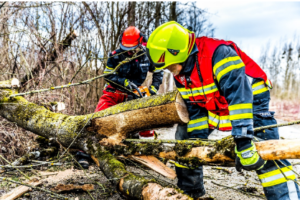Removal may be necessary if your tree is dead or in an unsafe area. Professional tree removal Adelaide Hills services should be sought for this task to ensure optimal results and avoid injuries to yourself and others during removal.
 To fell a tree safely, first, determine its lean direction and identify an open pathway along which it can fall.
To fell a tree safely, first, determine its lean direction and identify an open pathway along which it can fall.
Identify the Problem
Trees add beauty and increase property value, but sometimes, they can become an eyesore or safety hazard. Trees should be removed for health or aesthetics, as well as near power lines or sidewalks where falling limbs could pose a danger.
A tree removal Adelaide Hills arborist will assess several factors when deciding whether a tree needs to be taken down, starting with its location: Does the tree lean over houses, cars, areas where children play or other structures? If this is the case, then the removal should occur immediately.
Another critical consideration in the aftermath of tree damage is its state before being damaged; if it was already unhealthy before the damage occurred, its recovery may not be possible. Furthermore, invasive trees pose another significant challenge, as they encroach into native species’ territories and hinder ecosystem health by crowding out native species and suppressing biodiversity.
Preparation
Tree removal can be highly complex and laborious, requiring professional training, tools, and equipment. Before hiring tree removal Adelaide Hills service to undertake the removal process, we must assess the tree’s condition to ensure its removal will not cause damage to nearby properties or cause further disruption to our surroundings.
Professional arborists must assess the type of tree being uprooted, its height and length, number and size of branches, and age to evaluate its difficulty level and the necessary time required for removal. It is also crucial to know whether cutting down to the stud is needed or whether other methods may suffice to save it.
Other things to be considered include the tree’s vigour and overall health and whether or not its species is susceptible to pest infestation and damage. Value considerations could also come into play if it holds sentimental or aesthetic importance in its surroundings.
Before professional tree removal services arrive, it is wise to relocate any breakable items away from trees or to another part of your yard – this will avoid potential damages while simplifying their work.
Safety First
When cutting down trees, safety must always come first. A mistake in cutting can result in their falls, causing severe damage to nearby houses, cars or people passing nearby. Tree removal requires special equipment, an organised process and extensive knowledge – if this is something new to you, it’s wiser to hire professional help than risk attempting it yourself.
Before cutting a tree, you must estimate where its likely fall will occur. You can do this by circling and inspecting it from various angles, ensuring there is no lean in any direction and it won’t hit anything, such as houses, cars, power lines or fences. Working together with another person when estimating where a tree will fall can also help – one person can monitor where it falls while another cuts it down.
Check for wires near the tree, and contact the electric company if any are discovered so they can send someone out immediately to insulate or switch off any lines they find. Furthermore, ensure two escape routes that are clear of obstacles like fire pits, outdoor furniture or vehicles so you can immediately escape if the tree falls unexpectedly.
The Process
Removing a tree can vary widely depending on its proximity to buildings or power lines; for instance, in such cases, it may need to be felled, cut into pieces and removed in chunks rather than outright removed. Sometimes, pruning may be an alternative option for some trees instead of complete removal, although this scenario is less frequent.
Once a tree is safely isolated, an arborist can start their work. They’ll assess the area around it and look for anything that might be damaged if the tree were to fall, such as other trees, structures or public properties nearby that might also be at risk when its branches break free and fall.